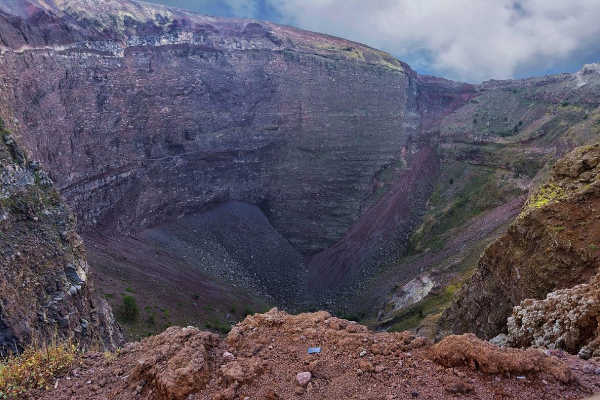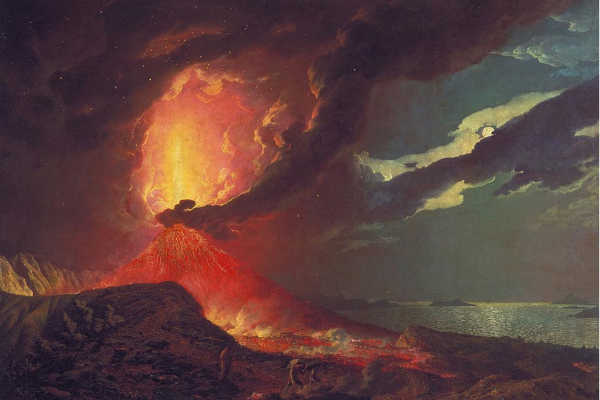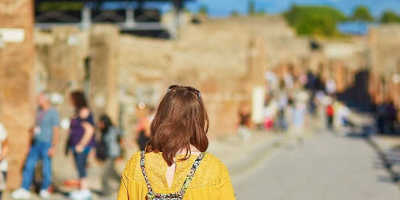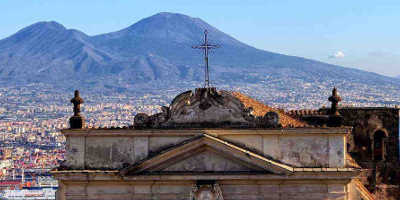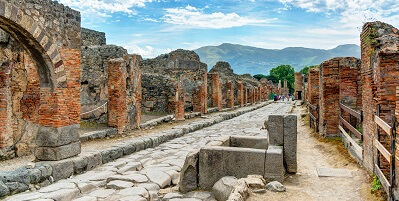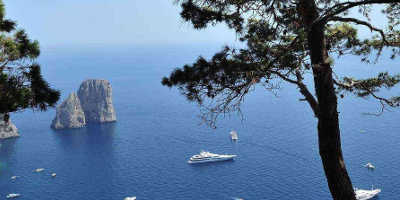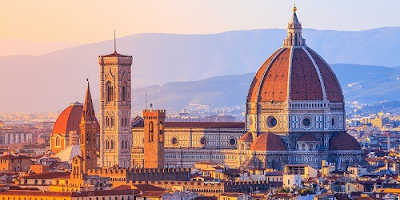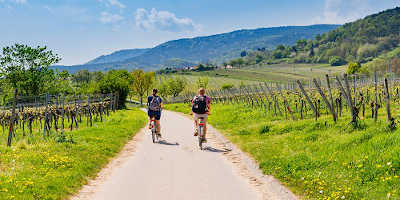11 Amazing Facts about Mount Vesuvius
Mount Vesuvius is one of the most well-known volcanoes in the world, and it is overdue for another eruption. Here are some fascinating facts about this deadly volcano!
-
1. It’s formed of two volcanoes!
That’s right; Mount Vesuvius doesn’t stand alone. While the ‘main peak’ is named Vesuvius, there is another mountain which is attached to it, Monte Somma. Atop this second mountain is a caldera, or crater, which was created following a previous eruption. Mount Vesuvius actually grew out of the top of Monte Somma.
-
2. The people of Pompeii didn’t realise they lived next to a volcano
Before the devastating eruption of 79 AD, the inhabitants of Pompeii had no idea they lived beside a volcano since it hadn’t erupted in around 1,800 years. In comparison, it’s been very active since, having erupted 6 times in the 18th-century, 8 times in the 19th-century and 3 times in the 20th-century. It last erupted in 1944.
-
3. Before 79AD there was no name for volcano
Following the devastating eruption, it was named after the Roman God of the Flame and Metal Forgery – Vulcan.
-
4. The volcano showed signs that it was about to erupt in 79 AD
In the lead up to the eruptions, there were a series of earthquakes. Unbeknownst to the citizens of Pompeii and Herculaneum, these were signs of things to come. In 62 AD, there was a massive earthquake that flattened many buildings. Luckily for some inhabitants, this was a blessing in disguise since many of them had to leave the city and eventually settled in towns further away from the volcano.
-
5. It rained elephants…ok, not quite
When the volcano began to erupt almost 2000 years ago, it shot tons of volcanic debris into the air, which then rained down upon the surrounding towns. To give you an idea of how much debris was scattered, it was the equivalent of 250,000 elephants per second!
-
6. Over in 24 hours
At about midday on August 24th in the year 79, Mount Vesuvius began to erupt. The first stage of eruption featured a blast that sent pumice stones thousands of feet into the air. These stones then fell like rain upon the surrounding towns, steadily burying them for roughly 5 hours. As the rocks continued to fall, they grew in size, and for the next few hours, they caused buildings and structures to collapse.
The second stage of the eruption occurred about 17 hours later when a ferocious pyroclastic flow poured from the volcano, covering Pompeii and Herculaneum in a thick layer of smouldering debris in a matter of minutes. The dust over the towns and cities began to settle after a day of relentless volcanic bombardment.
-
7. Brilliantly preserved until now
The remains of Pompeii lay in an impressive state of preservation for over 1,600 years until they were uncovered in the 18th-century. Since their excavation, human interference and natural weathering have led to their decline. Archaeologists are concerned for the future preservation of the site and Pompeii is recognised by the World Monuments Fund; an organisation dedicated to the preservation of historic architecture. It is estimated that the conservation of the site will cost $335 million. With much of Pompeii and nearby Herculaneum still lying hidden under the volcanic debris, there will still be remnants of the cities in existence for many years to come, but it is not certain how much of the already excavated artefacts will remain.
-
8. We haven’t uncovered everything that Mount Vesuvius destroyed
Around two-thirds of the city of Pompeii, and even less of neighbouring Herculaneum has been excavated. Much of what is left uncovered may remain so for many years to preserve the remnants of the ancient cities. Herculaneum is now buried under the city of Ercolano and, though they have demolished parts of the town to enable excavations in the past, it is unlikely to be uncovered soon. Who knows what treasure or secrets of the past are waiting to be discovered!
-
9. Mount Vesuvius makes delicious food
You may wonder why so many people lived, and continue to live, in the shadow of Mount Vesuvius. Well, the answer is simple, volcanic soil is fantastic for plant growth! The ash and lava deposits left by the volcano are rich in minerals such as potassium, phosphorus, and nitrogen and create incredibly fertile soil. Irpinia, a town close to Mount Vesuvius, grows the red grape Aglianico and the white grapes Fiano and Greco do Tufo, each of which makes delicious wines. Mount Vesuvius also grows a variety of tomato, ‘Pomodorino del Piennolo del Vesuvio’ that has been granted Protected Geographical Status to mark its quality.
The porous nature of the hardened lava also makes it perfect for storing water in the ground, acting like a sponge. Because of this, many of the vineyards surrounding Mount Vesuvius don’t require any artificial irrigation during the summer months since the spongy earth slowly releases its water to feed the vines.
-
10. Pliny the Younger
The author, lawyer, and magistrate Pliny the Younger, who was located 18 miles away in the Bay of Naples, observed the eruption in 79 AD. As he watched the fateful events unfold, he wrote what he saw, and his account became the first detailed description of a volcanic eruption in history. He wrote:
“Its general appearance can best be expressed as being like an umbrella pine, for it rose to a great height on a soft trunk and then split off into branches.”
Volcanologists now refer to eruptions with a tall plume that cover large areas with ash as ‘Plinian’ eruptions.
-
11. It’s still active…and it will erupt again.
Mount Vesuvius is listed among the most dangerous volcanoes in the world. Volcanologists and geologists alike agree that the next volcanic eruption is overdue and that when it does happen, it will be big. The layer of magma that lies beneath Vesuvius measures a huge 154 square miles – that’s a lot of magma. When the volcano does eventually erupt, it has the potential to be massive, affecting over 3 million people and destroying the city of Naples. This may sound scary, but with scientists monitoring the volcano’s activity 24/7, there will be plenty of time to warn nearby residents and move people to safety.
Related article: What is the history of Mount Vesuvius?

